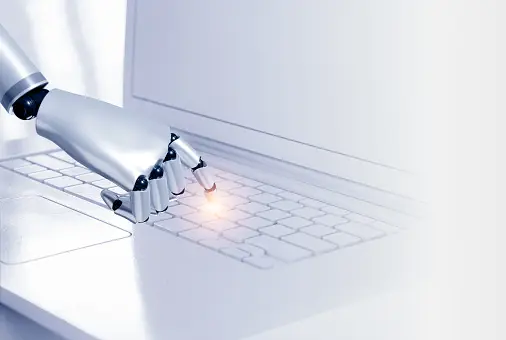A group of engineers sits in a plush conference room in Silicon Valley and watch intently as a glove-clad hand grasps at unidentified objects in the air. This demonstration is not typical. What was once thought to be science fiction is now becoming tangible thanks to haptic technology, which is the science of using touch to control computer applications. This technology is slowly but surely becoming woven into the fabric of our digital lives, reshaping the ways in which we relax, work, and play from afar and heal.
The Magic of Haptics
The fundamental components of haptic technology are a variety of systems and devices that provide the user with vibrations, forces, and motions that imitate the sensation of touch. Advanced haptic feedback can recreate the texture of cotton or the resistance of a stiff wind, in addition to the buzz of your smartphone or the rumble of a gaming controller. As this innovation advances, the limit between the computerized and actual world foggy spots, upgrading the authenticity of every communication.
Imagine playing a video game where you can feel the grass under your feet or the brush of an enemy’s cloak as they pass by. Or picture a remote meeting where a handshake feels as firm and real as if you were in the same room. Haptic technology promises not just an enhancement of sensory experience but a revolution in how we perceive digital environments.
Enhancing Entertainment
The realm of gaming is arguably the most vivid beneficiary of haptic advancements. Here, the ability to feel and interact with virtual environments elevates the experience from mere visual and auditory engagement to something deeply immersive. Players are not just observing worlds; they are touching them. The emotional resonance of a game can increase exponentially when you feel the impact of actions, transforming gameplay into something truly visceral.
Transforming Remote Work
The shift towards remote work has been one of the defining movements of our age, accelerated by necessity but perpetuated by technology’s reach. Haptic feedback in remote work settings can bridge the gap of physical absence, allowing colleagues to feel present through shared virtual spaces. This could be as simple as a vibration indicating a coworker’s approval or as complex as a full-body suit that lets you walk through a digital model of a new building design with potential tactile feedback.
Revolutionizing Telemedicine
Perhaps nowhere is the potential of haptic technology more poignant than in telemedicine. During a time when physical distance can mean the difference between safety and risk, being able to feel through a screen is more than innovation; it’s a lifeline. Surgeons can perform procedures with robotic tools that send back sensations as if they were touching the tissues with their own hands. Patients receive more personalized care, and doctors are afforded a level of detail that was previously beyond reach.
Real-Life Examples Bringing Touch to Life
- Gaming That Feels Real: In Tokyo, a tech startup has developed a VR game where players wear suits equipped with haptic feedback sensors. As they navigate through a virtual forest, the sensation of leaves brushing against their arms and the uneven terrain under their feet is vividly simulated, enhancing the depth of the gaming experience.
- Remote Collaboration Reimagined: A software company in New York has introduced a haptic-enabled platform for architects and designers. Through specialized gloves and VR headsets, users can manipulate and feel the texture of building materials, collaborate on adjustments in real-time, and experience their creations spatially, which was unimaginable a few years ago.
- Telemedicine with a Human Touch: A hospital in Sweden uses haptic interfaces in its remote diagnosis tools. Doctors can examine patients by controlling robotic arms that provide real-time tactile feedback, allowing for more accurate assessments and a heightened sense of personal care during patient interactions.
The Future Is Here
As we stand on the brink of this new tactile frontier, the possibilities seem endless. Haptic technology is not just about enhancing entertainment or making remote work more effective. It’s about redefining human experience in the digital age. It’s about connecting us in ways that transcend the traditional senses, bringing us closer to a world where the digital and physical are indistinguishable.
The journey of integrating haptic feedback into our daily digital interactions is just beginning. It holds the promise of making distant worlds feel close and turning virtual experiences into tangible realities. In this new era, the line between what’s real and what’s virtual isn’t just blurred—it’s altogether reimagined. As we continue to explore and expand the capabilities of this technology, one thing is certain: the future feels incredibly promising.



